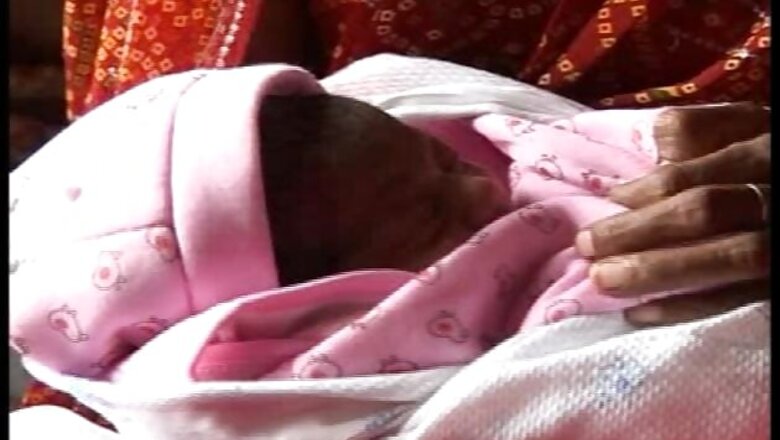
views
United Nations: India's child mortality rate has dropped by more than half since 1990 but it still recorded the world's highest number of deaths among children below age five in 2013, a United Nations report said on Tuesday, acknowledging the progress made by the world's second most populous nation.
The report, 'Levels and Trends in Child Mortality 2014', found that India registered 1.34 million under-five deaths in 2013, the highest in the world.
While more Indian children are surviving to their fifth birthday than in 1990, it along with Nigeria still accounted for more than a third of all such deaths in 2013.
Acknowledging the substantial global progress in reducing child deaths since 1990, the report cited the example of countries like India that are "beginning to lead the way". The number of under-five deaths in India declined from 3.33 million in 1990 to 1.34 million in 2013. The number of under-five deaths worldwide has declined from 12.7 million in 1990 to 6.3 million in 2013.
During the same time, India's infant mortality rate fell from 88 deaths per 1,000 live births in 1990 to 41 in 2013, while the neonatal mortality rate fell from 51 deaths per 1,000 live births to 29 last year, the report said.
About half of the all under-five deaths occur in only five countries - India, Nigeria, Pakistan, Democratic Republic of the Congo and China. India (21 per cent) and Nigeria (13 per cent) together account for more than a third of all under-five deaths in the world.
About 2.8 million babies died globally within the first month of life, which represents about 44 per cent of all under-five deaths. Around two-thirds of neonatal deaths occur in just 10 countries, with India accounting for more than a quarter of such deaths.
The report also found that in 2013, the children under five died from mostly preventable causes. The leading causes being pre-term birth complications (17 per cent), pneumonia (15 per cent), complications during labour and delivery (11 per cent), diarrhoea (9 per cent) and malaria (7 per cent).
Under-nutrition contributes to nearly half of all under-five deaths. The report by the UN Inter-Agency Group for Child Mortality Estimation, UNICEF and the World Health Organisation said that while the decline translates into around 17,000 fewer children dying every day in 2013 than in 1990, it still implies the deaths of about 17,000 children under age five every day in 2013.
"There has been dramatic and accelerating progress in reducing mortality among children, and the data prove that success is possible even for poorly resourced countries," UNICEF's global health programmes head Mickey Chopra said.
Director of Health, Nutrition and Population at the World Bank Group Olusoji Adeyi said for continued progress, it is essential to invest more in health systems that deliver high-quality, affordable services to all women and children who need them.
In June this year, WHO, UNICEF and partners issued the first-ever global plan to end preventable newborn deaths and stillbirths by 2035. The 'Every Newborn Action Plan' calls for all countries to take steps to provide basic, cost-effective health services to women during the time of childbirth, as well as for sick babies and to improve the quality of child care.
Assistant Director General at WHO Flavia Bustreo said that the global community is poised to end preventable maternal, newborn and child deaths within a generation and "the challenge now is to move from plan to action".
The report notes that major improvements in child survival are in part due to affordable, evidence-based interventions against the leading infectious diseases, such as immunization, insecticide-treated mosquito nets, rehydration treatment for diarrhoea, nutritional supplements and therapeutic foods.
A separate report 'The 2014 Committing to Child Survival: A Promise Renewed progress' said that the first 28 days of a newborn's life are the most vulnerable with almost 2.8 million babies dying each year during this period.
Many of these deaths could be easily prevented with simple, cost-effective interventions before, during and immediately after birth. Evidence shows that initiating breastfeeding within one hour of birth reduces the risk of neonatal death by 44 per cent, yet less than half of all newborns worldwide receive the benefits of immediate breastfeeding.
Additionally, the education level and age of the mother has a significant bearing on the chances of her baby's survival. Neonatal mortality rates among mothers with no education are nearly twice as high for those with secondary schooling and above.
"The data clearly demonstrate that an infant's chances of survival increase dramatically when their mother has sustained access to quality health care during pregnancy and delivery," UNICEF Deputy Executive Director Geeta Rao Gupta said.


















Comments
0 comment